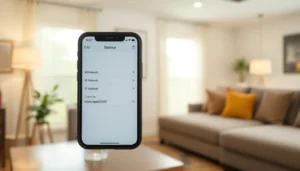Table of Contents
ToggleImagine a world where doctors can monitor patients’ health from a distance, where clinical trials run smoother, and where data is more reliable than ever. Welcome to the age of wearables in clinical trials. These smart devices are not just stylish accessories: they are revolutionizing the way we collect health data. With the ability to track vital signs, activity levels, and even stress levels, wearables provide invaluable insights into patient health. Curious about how these nifty gadgets are changing the clinical landscape? Let’s investigate deeper.
The Rise of Wearable Technology in Healthcare

Wearable technology has surged dramatically in recent years. It’s not solely confined to fitness enthusiasts anymore. Healthcare professionals have recognized the myriad applications of these devices in clinical settings. Medical-grade wearables now offer accurate and continuous monitoring, spanning everything from heart rates to glucose levels.
When equipped with advanced sensors, these gadgets enable physicians to gather crucial data in real time. The integration of wearables into healthcare is being hailed as a game-changer, thanks to their ability to empower patients and enhance the efficiency of clinical trials. As technology advances, so too does the potential for wearables to shape the very future of medical research.
Benefits of Wearables in Clinical Trials
Wearables bring a plethora of benefits to clinical trials. First and foremost, they enhance patient engagement. Participants feel an increased sense of involvement, knowing that their data is being monitored closely.
Also, wearables provide continuous data collection, which yields more robust insights over time. Instead of relying solely on periodic visits, researchers can monitor health metrics around the clock. This constant stream of data leads to more accurate assessments of treatment effects and safety.
Also, integration of wearables often results in reduced costs. Virtual monitoring can limit the need for hospital visits, freeing up resources and making participation more accessible for patients. With wearables, the barriers between patient and researcher begin to diminish.
Types of Wearable Devices Used
Various types of wearable devices are making waves in clinical trials. Smartwatches are the most prominent, offering functionality that ranges from heart rate monitoring to ECG readings. These wearable devices not only track vital parameters but can also send alerts when anomalies are detected.
Fitness trackers are another popular choice, measuring daily activities and providing insights into physical health. Devices such as those focusing on sleep patterns are invaluable in studies where rest impacts outcomes. Also, specialized health devices, like continuous glucose monitors or blood pressure cuffs, are becoming more common in clinical assessments. Each of these devices plays a specific role in collecting data, contributing to a comprehensive understanding of patient health.
Data Collection and Analysis
The data collected by wearable devices is unparalleled. Continuous monitoring provides researchers with a treasure trove of information. This wealth of data enables more nuanced analyses, paving the way for improved outcomes in clinical trials.
Also, sophisticated algorithms process this data, identifying trends and patterns that may not be visible through traditional data collection methods. This level of analysis allows for individualized treatment strategies, enhancing patient-centric approaches. Besides, remote data collection ensures that participants can contribute from the comfort of their homes, eliminating geographic barriers. The efficiency and privacy of gathering this data are significantly improved with wearables.
Challenges and Limitations
Even though their advantages, wearables in clinical trials aren’t without challenges. Data privacy is a significant concern. Patients must trust that their personal health information is secure, raising questions about data handling and consent.
Also, the accuracy of the devices can be a sticking point. While many wearables provide highly reliable data, inconsistencies can occur, particularly if devices are not calibrated or used correctly. The digital divide also poses challenges: not all patients have the same access to technology.
Finally, ensuring participant adherence can be difficult. If patients do not wear devices consistently, the quality of the data may be compromised, potentially skewing the results of a clinical study.
Future Trends and Innovations
The future of wearables in clinical trials looks bright, with numerous innovations on the horizon. With advancements in artificial intelligence, predictive analytics will soon enable real-time decision-making based on data collected from these devices.
Also, the integration of wearables with telemedicine platforms is anticipated to expand. This synergy will create an even more comprehensive approach to patient monitoring, enhancing the efficiency of clinical trials. Innovations in battery life and sensor technology will likely improve the functionality and comfort of wearables, making them more appealing to patients. As wearables continue to evolve, their role in healthcare is bound to grow, ushering in a new era of precision medicine.







